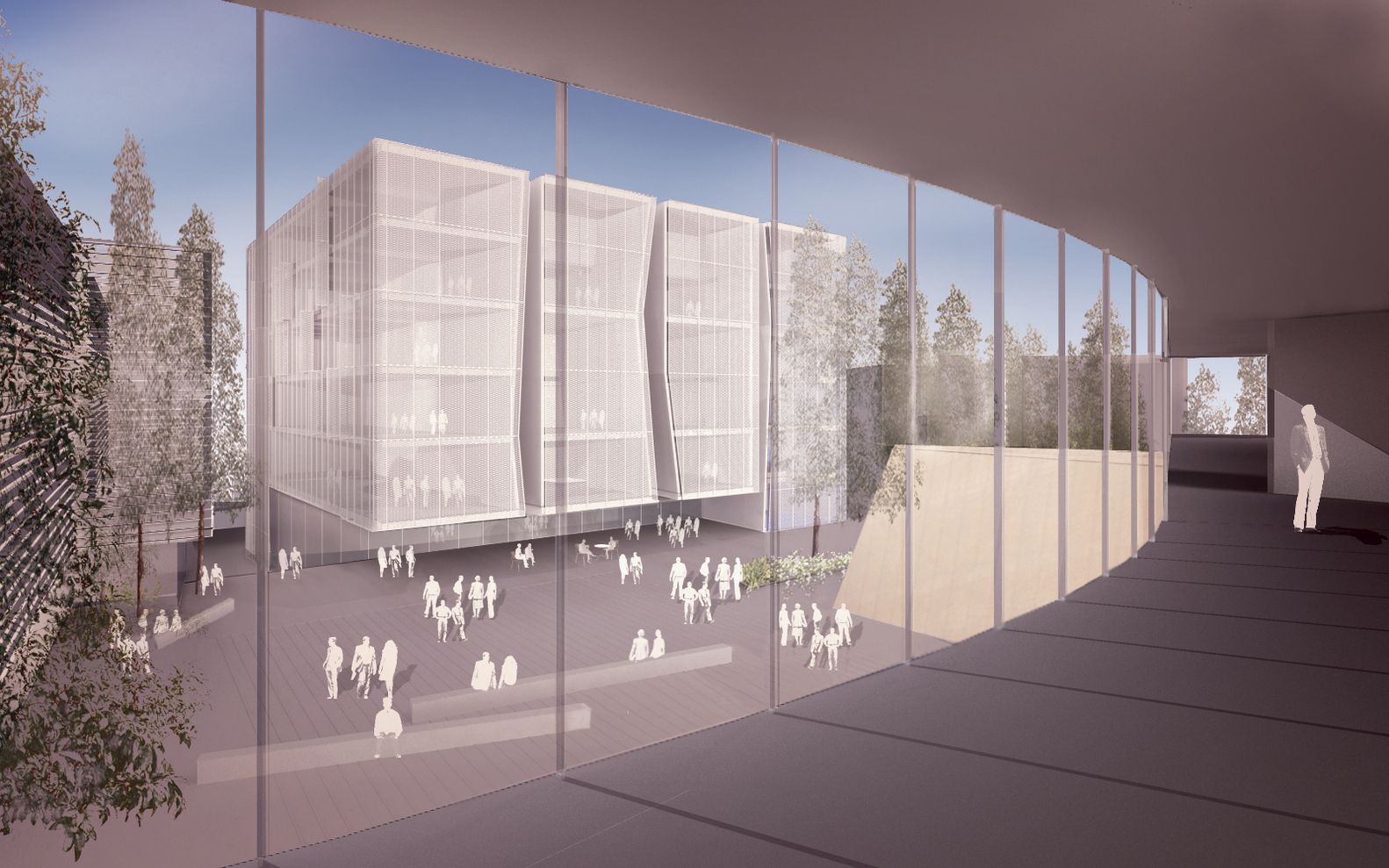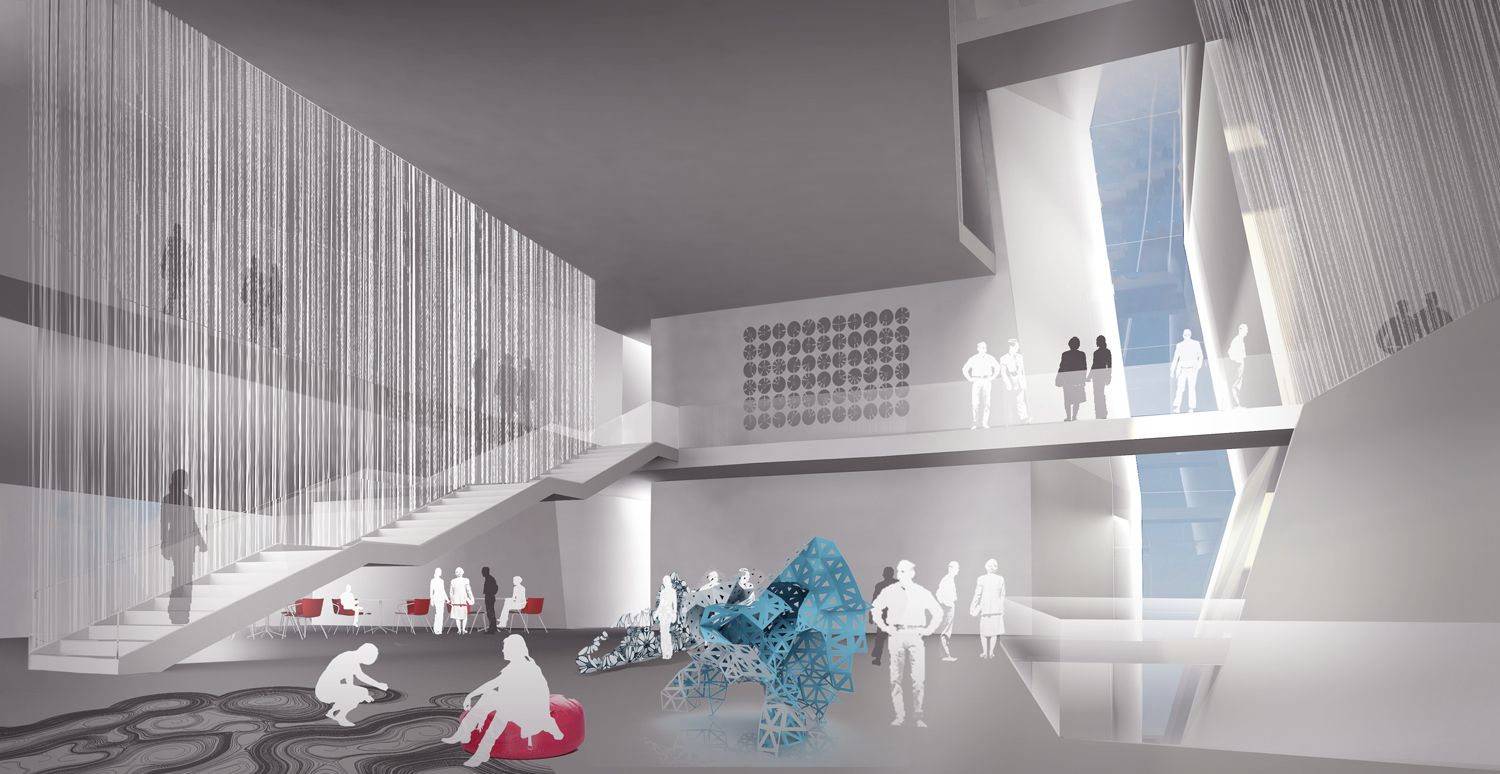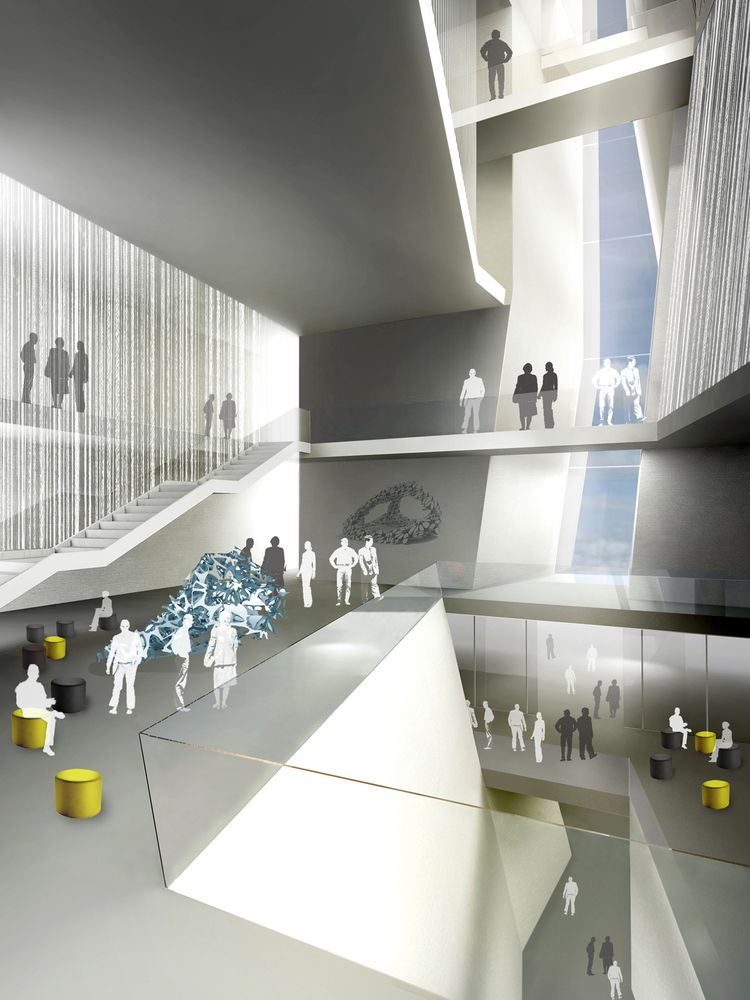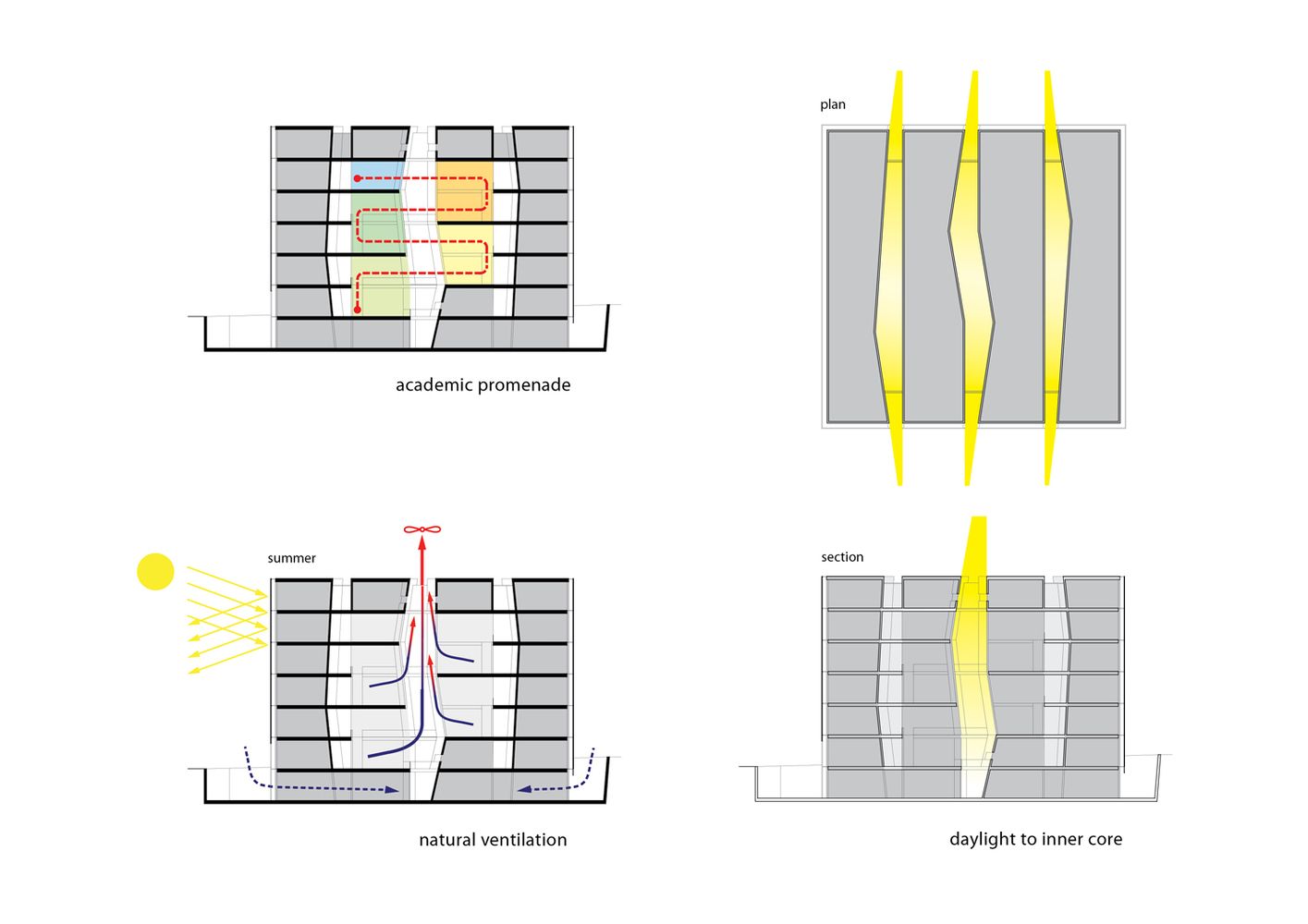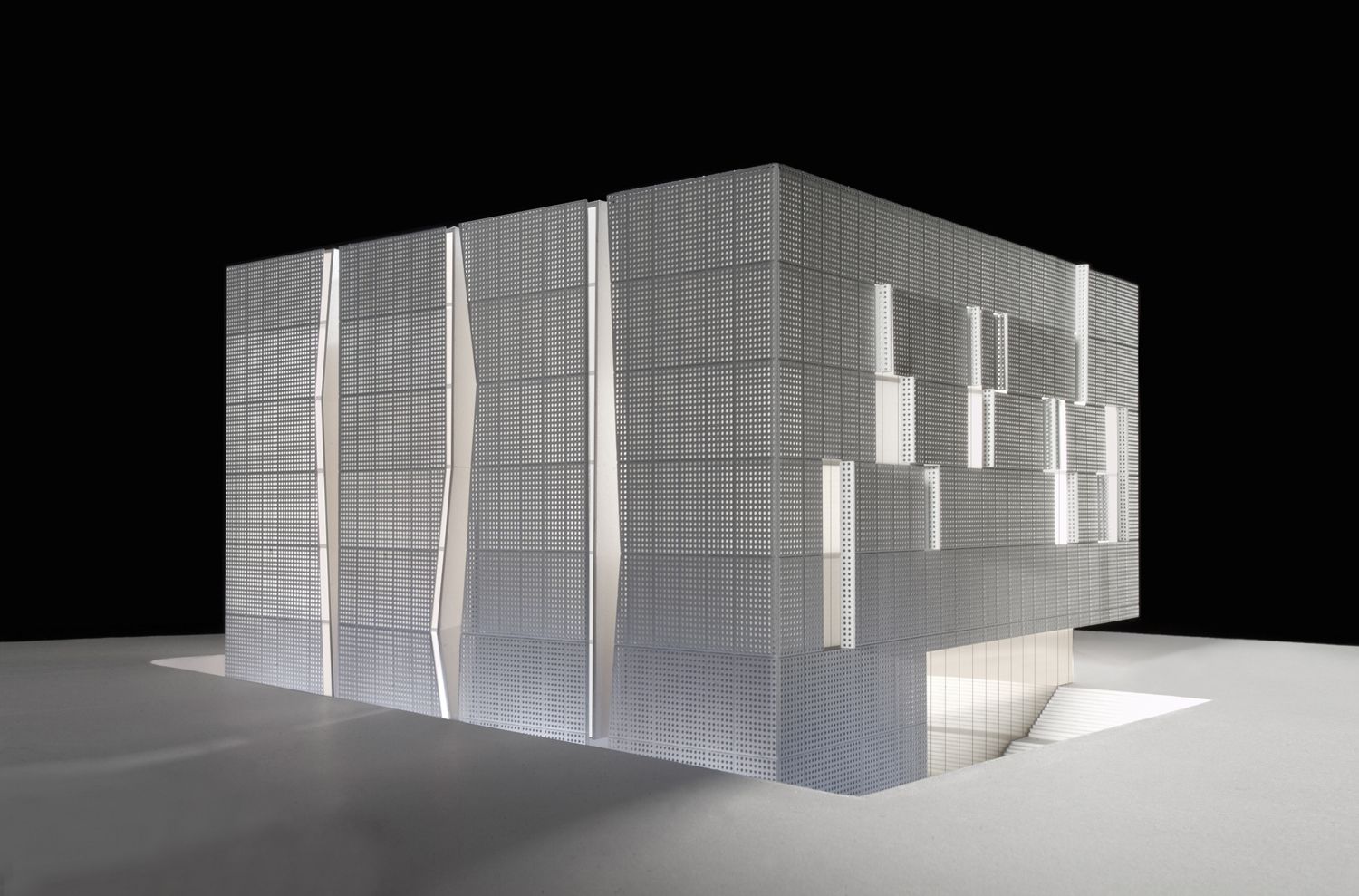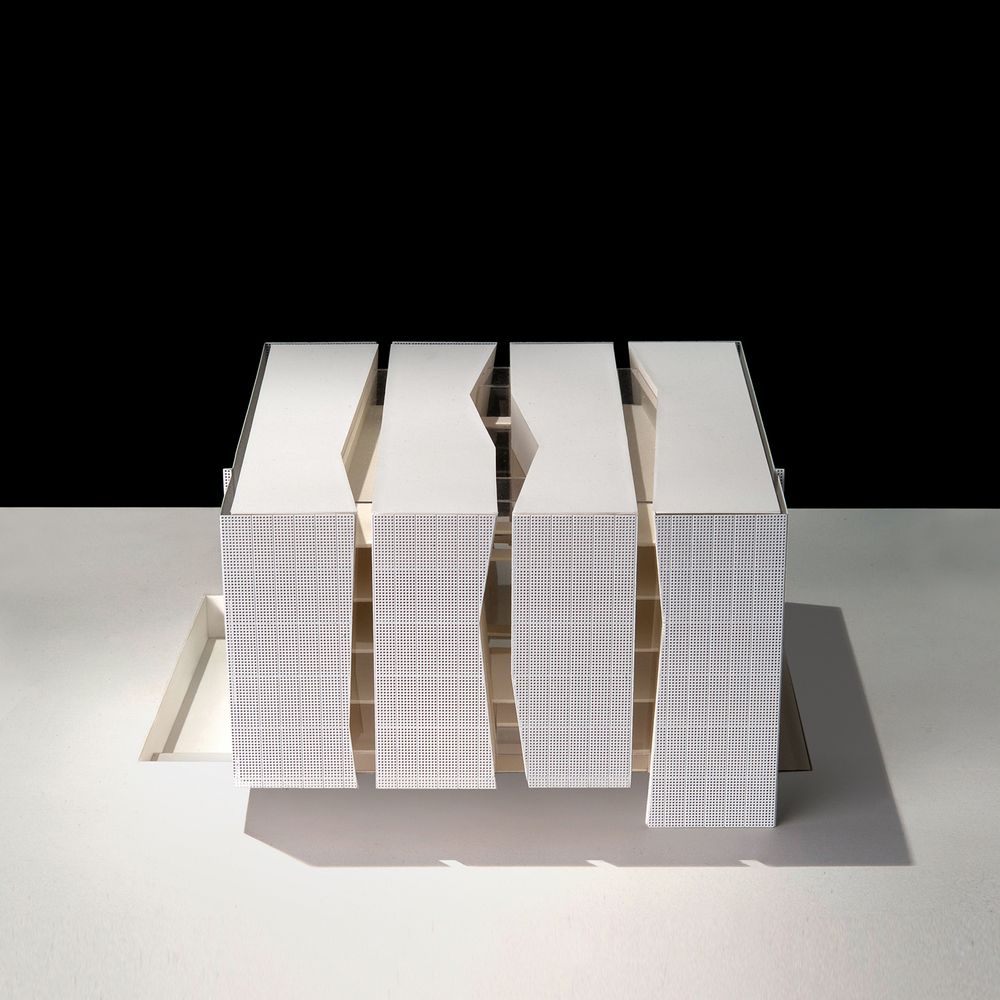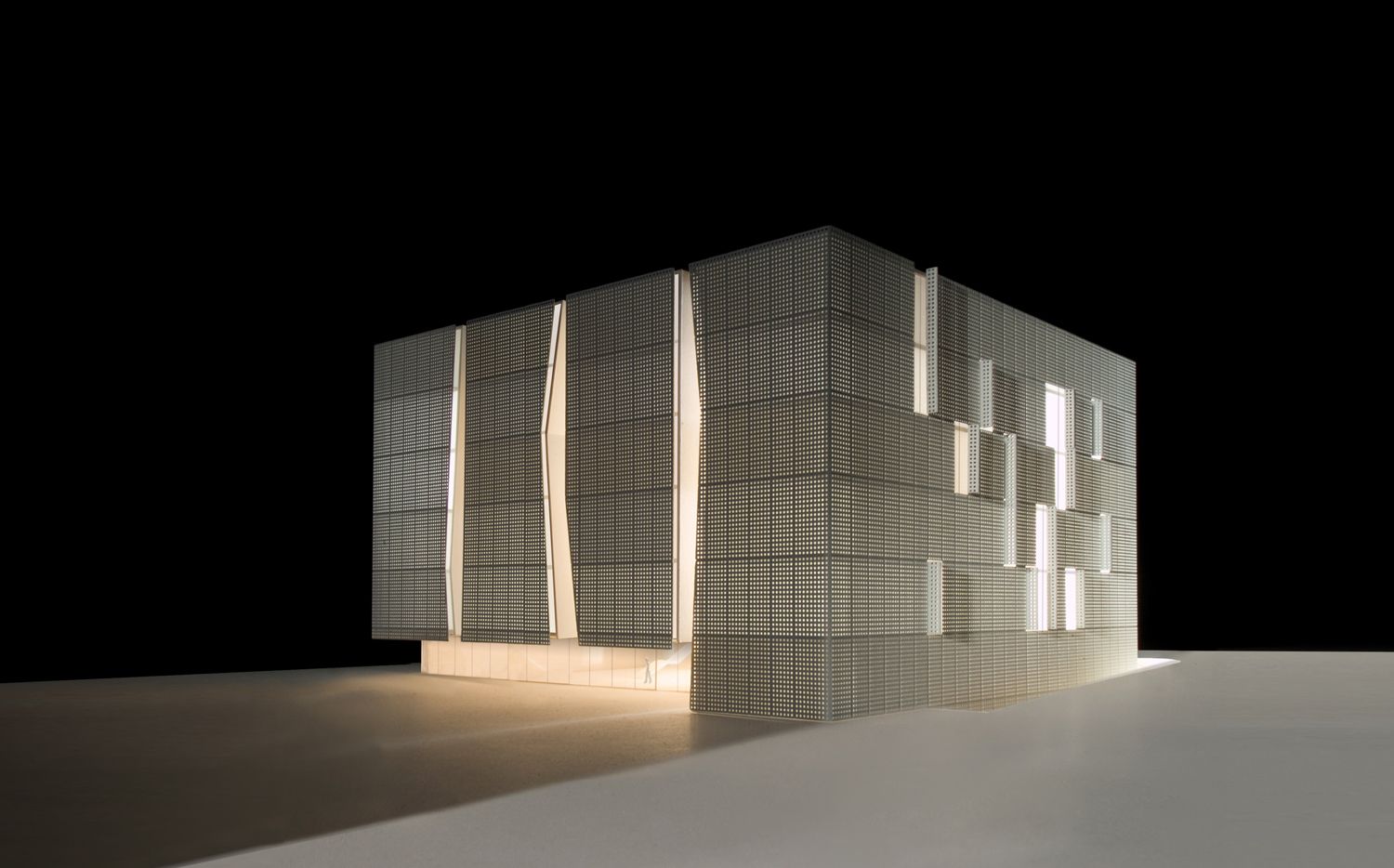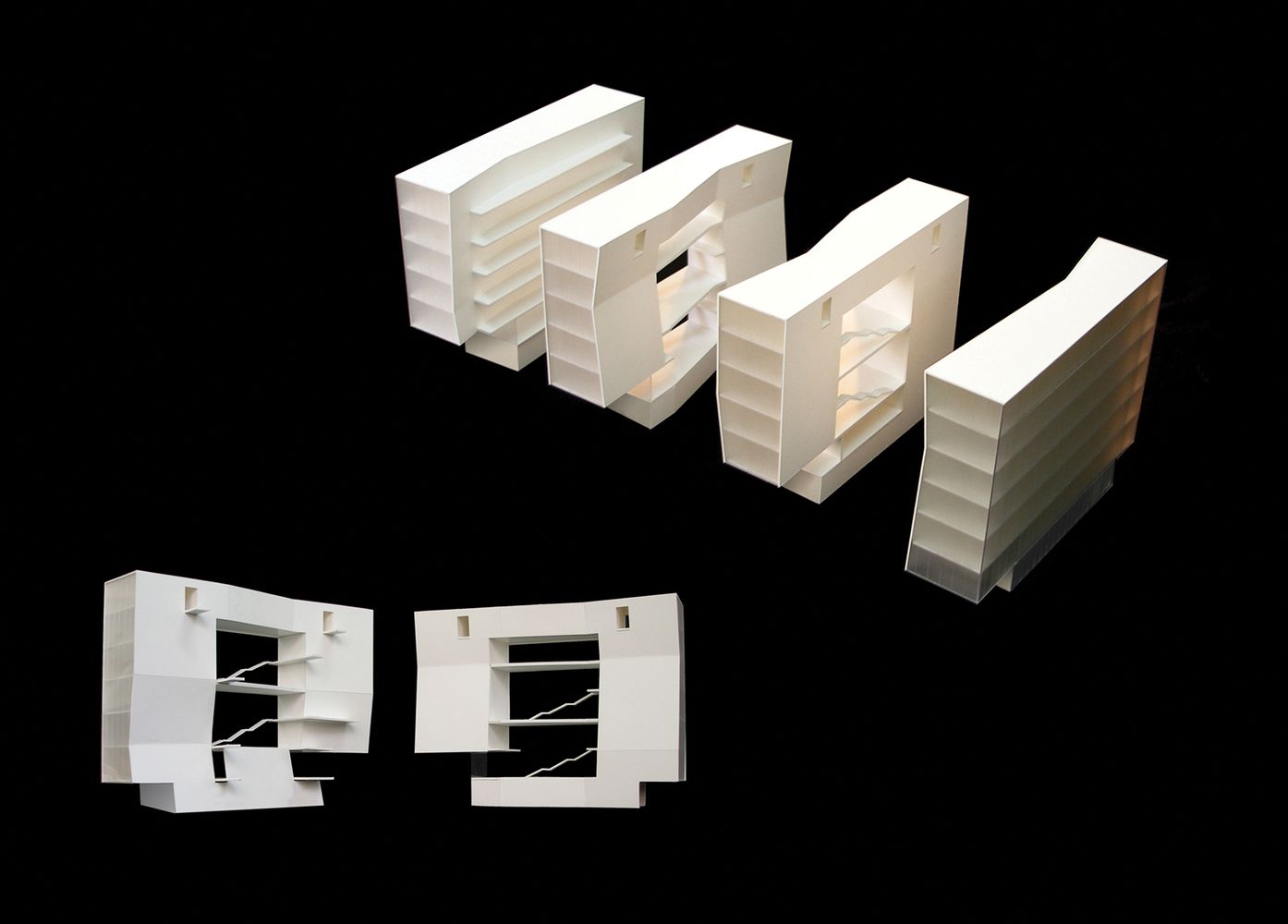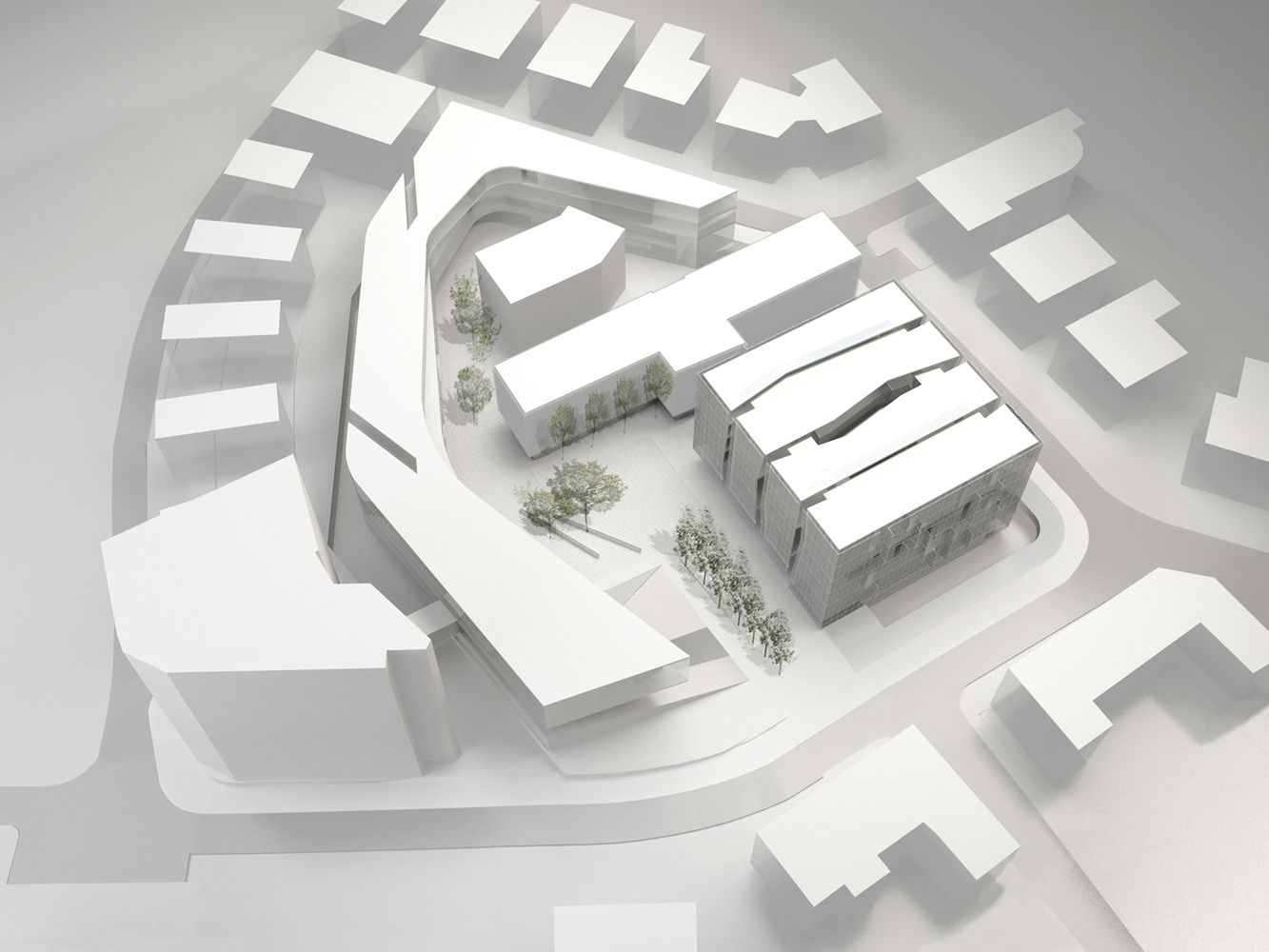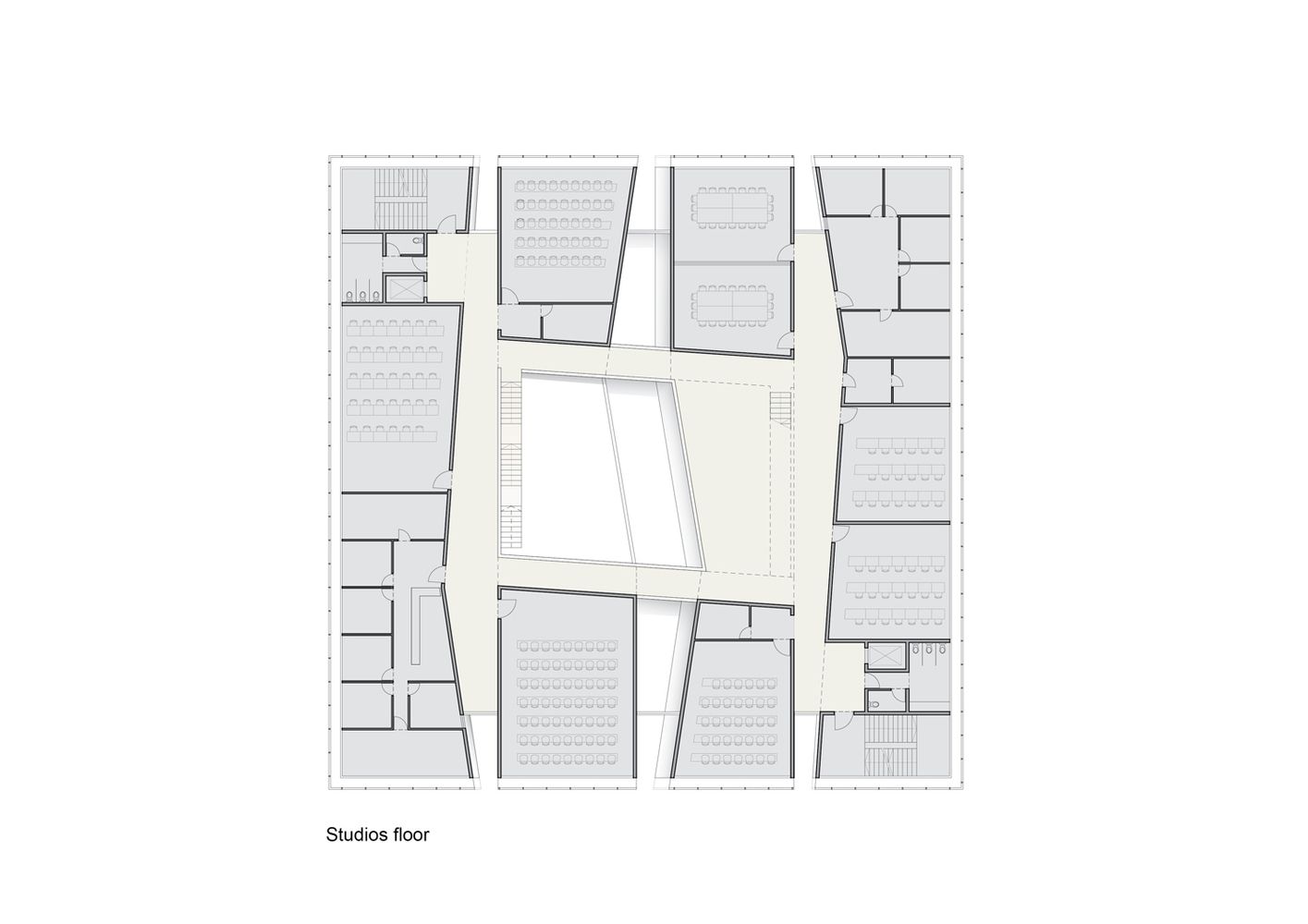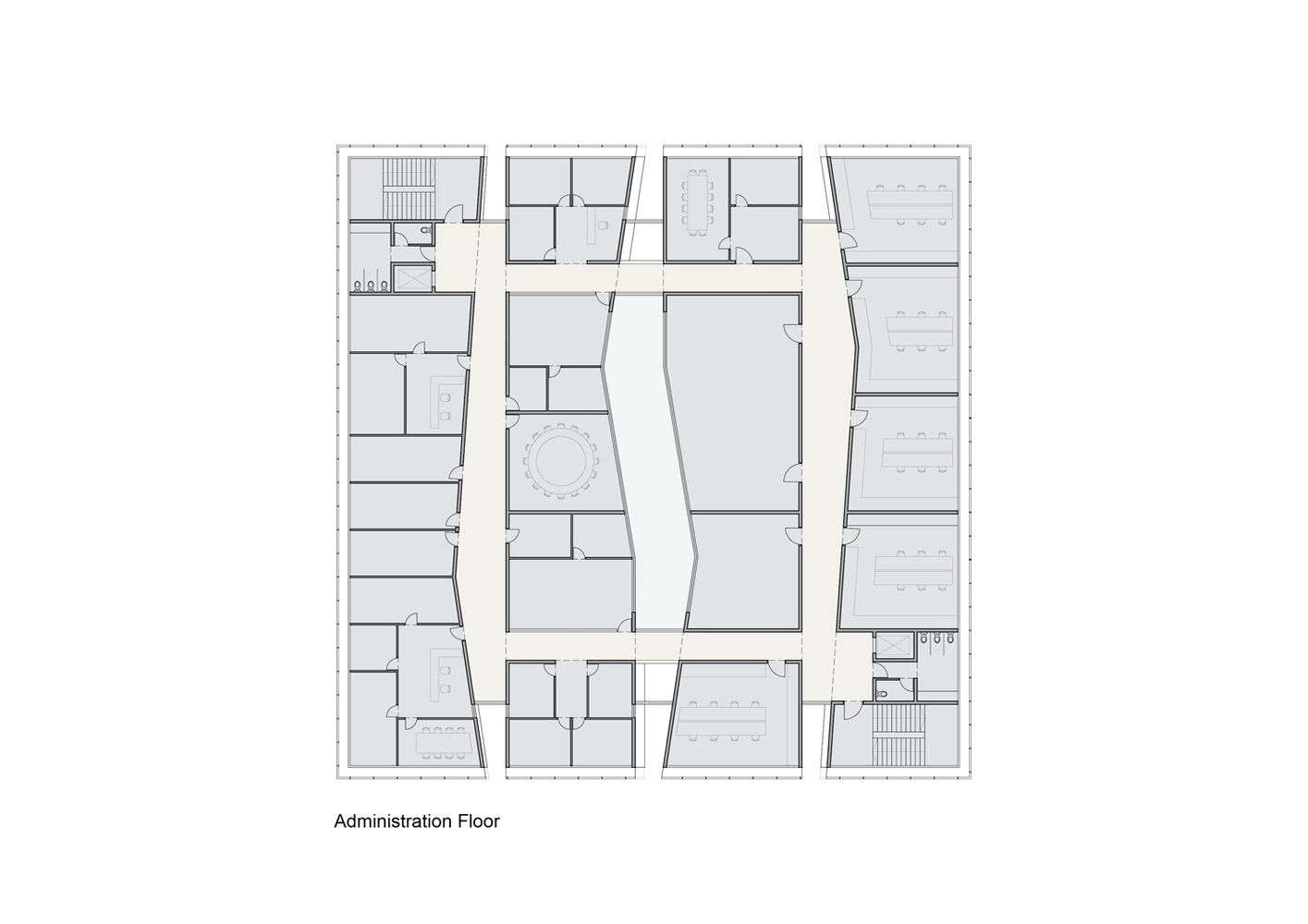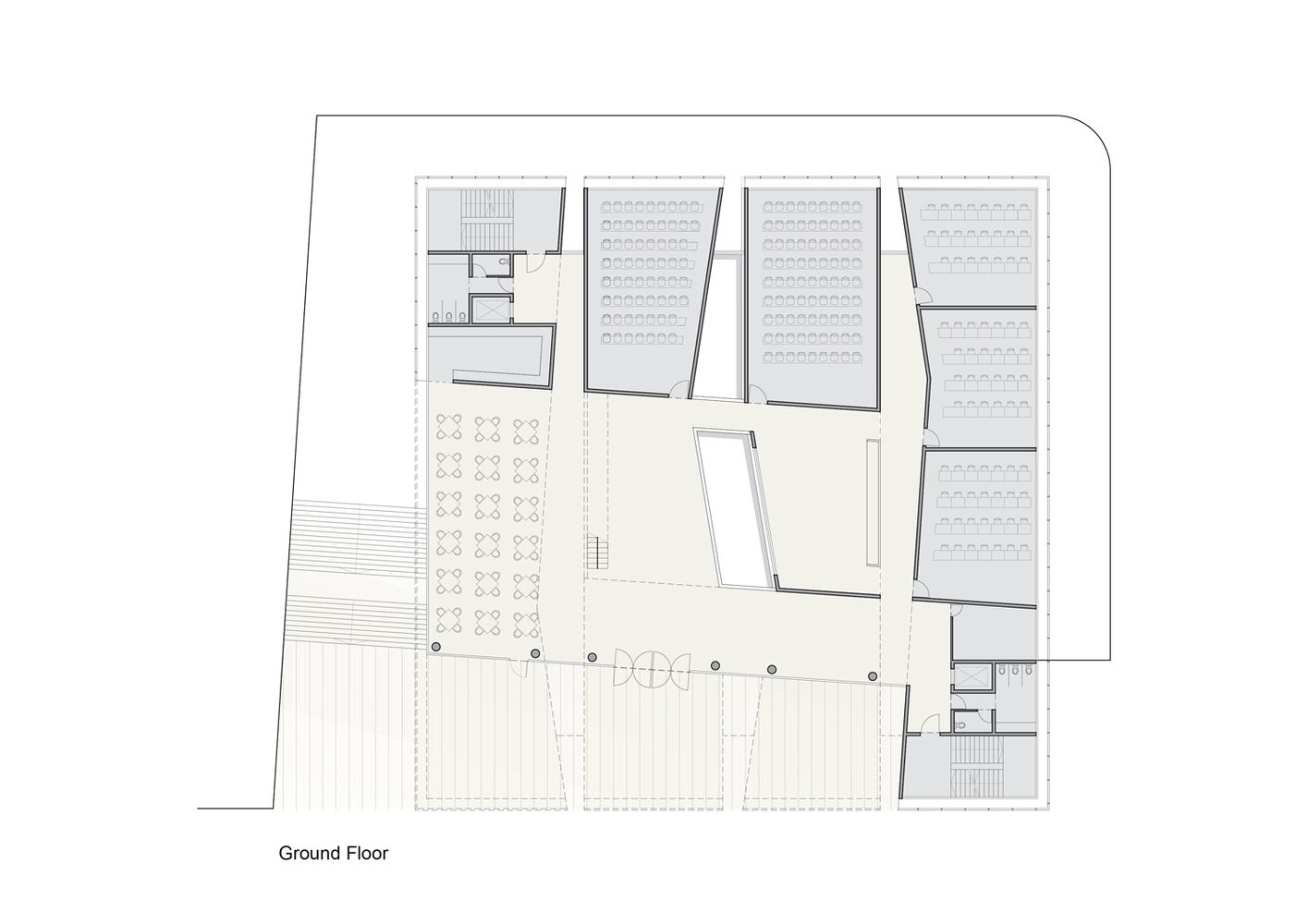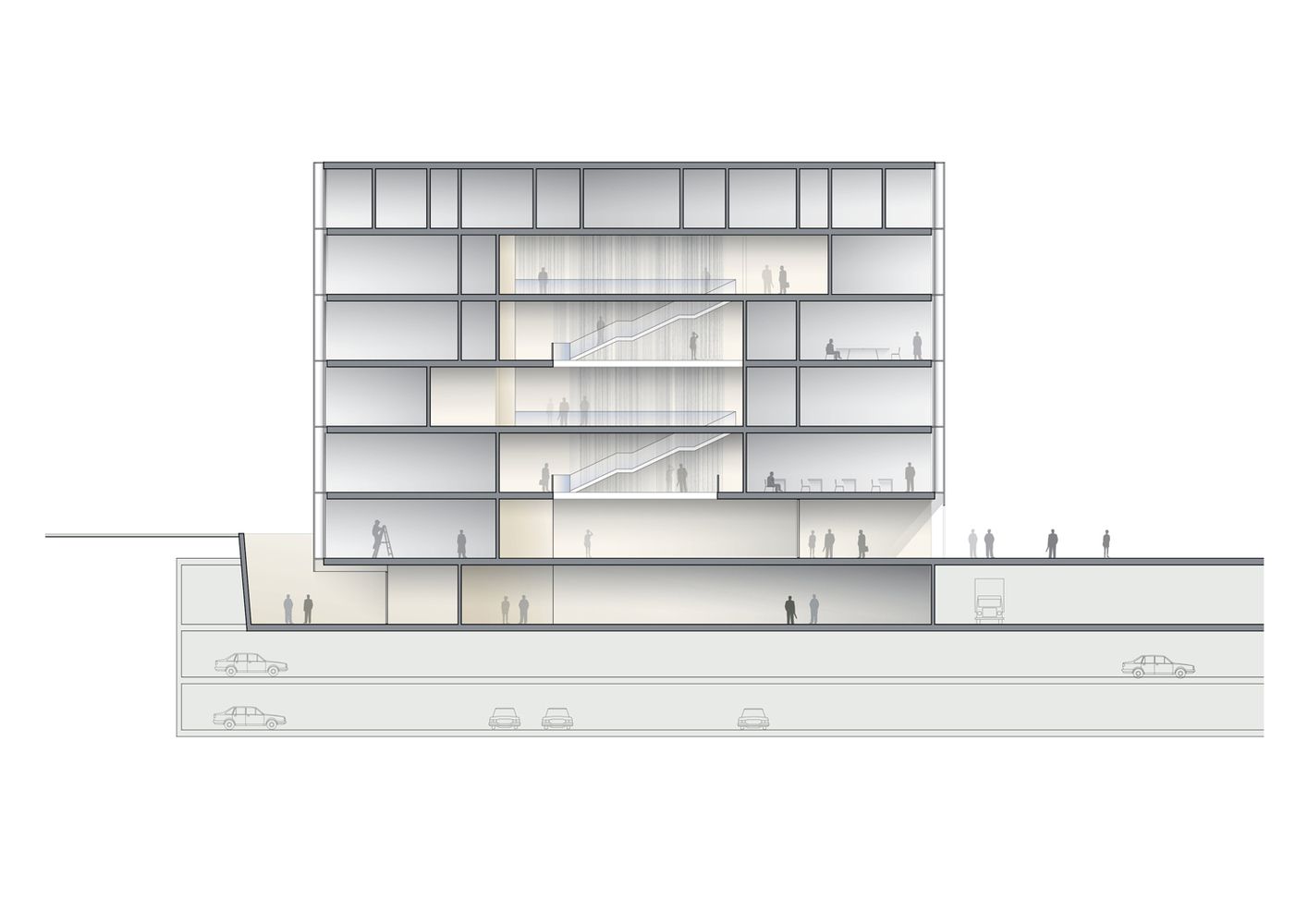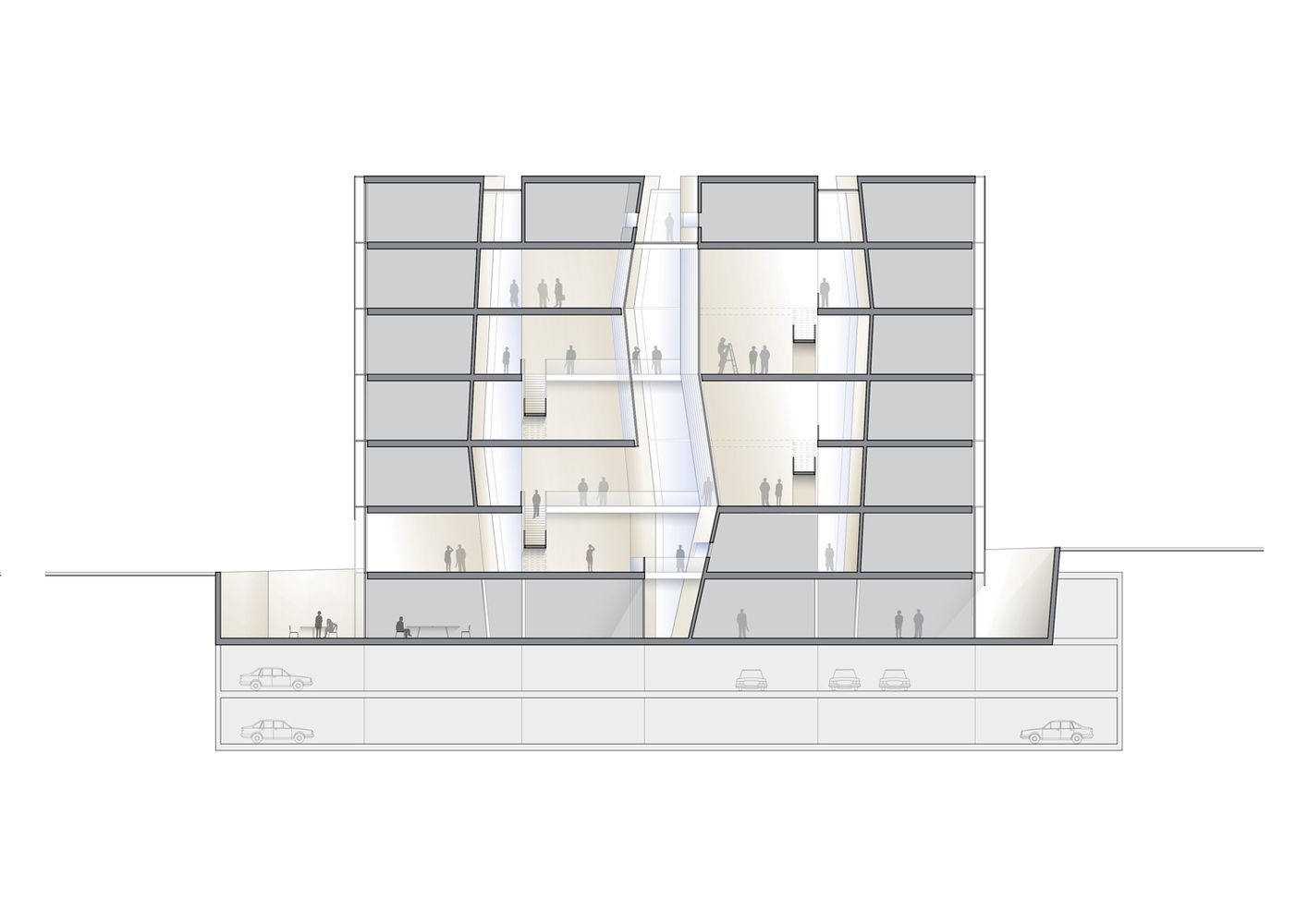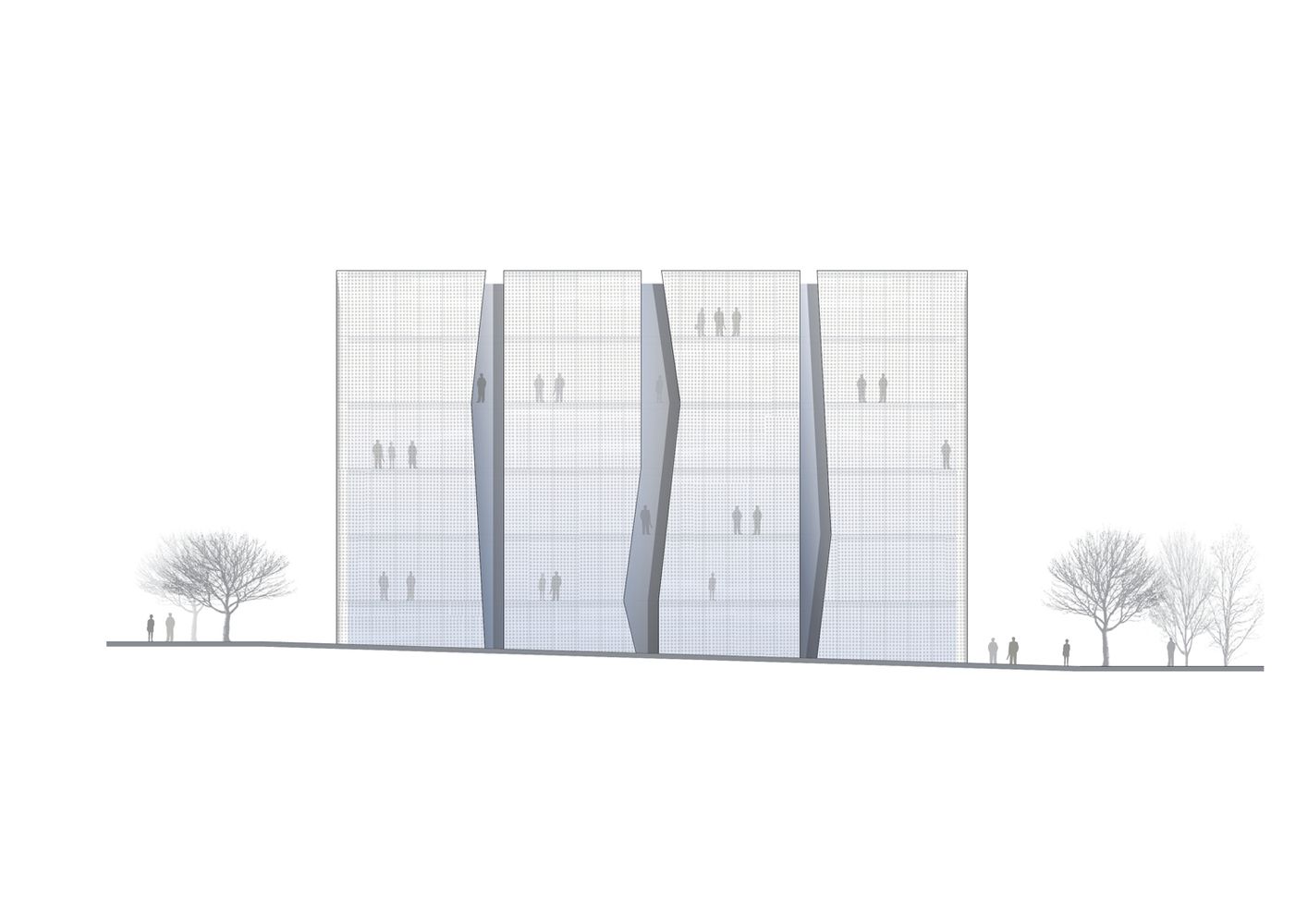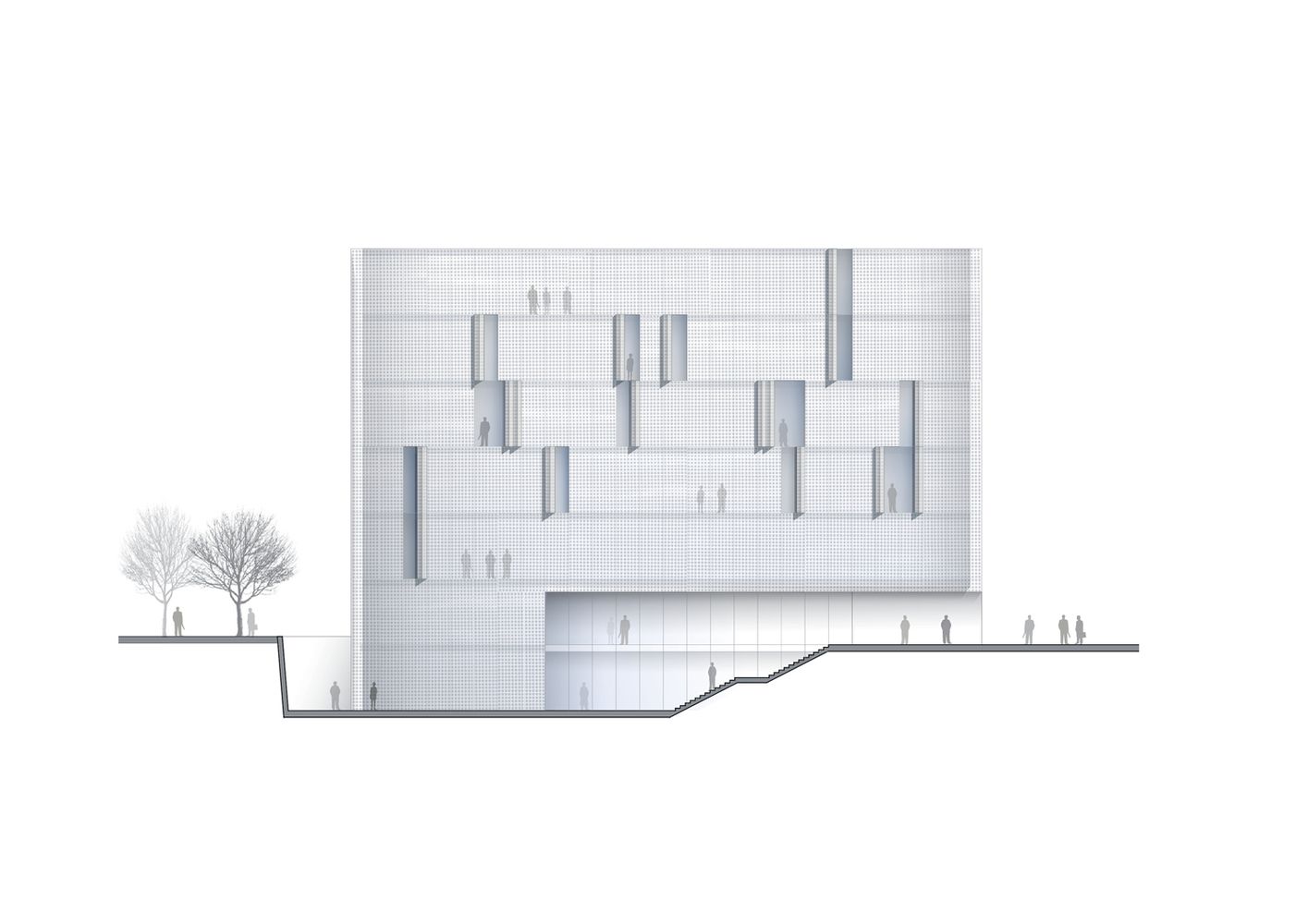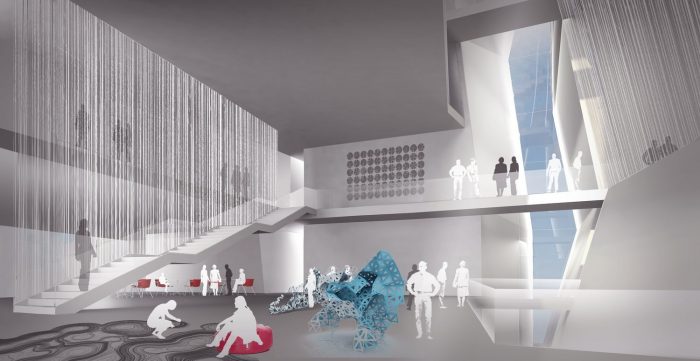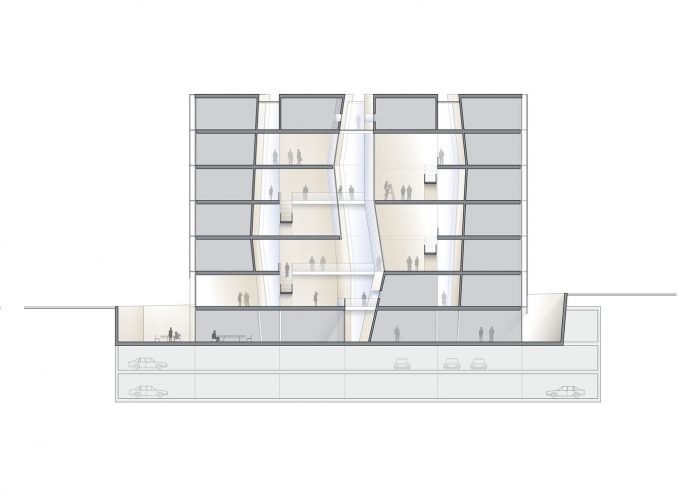The Fashion and Art Graduate School building marks the main entrance to the college compound and sits on the campus central square. Its ground floor opens onto the square in such a way that the square seems to be a part of the entrance foyer. The building is intended to bring together students from various disciplines. In planning the building, as in planning the entire campus, an emphasis was placed on creating spaces where meetings and interactions can take place between the school’s various disciplines.
The structure is a seven-story, 8000 sq. meter, square plan prism. Six floors rise above the adjacent road while the lowest floor, the workshop level, is below road level, surrounded by a sunken courtyard which allows daylight to enter the rooms. The sunken courtyard is connected by a broad stairway to the main square. It is on the same level as the parking and delivery level, making deliveries to the workshops, and the building, convenient and efficient.
The cafeteria on the entrance level opens to the public square and will serve as a center for leisure time activity for students. From the foyer entrance, all activity on the university campus is visible. The building interior is planned as a concentric hive of activities. The classrooms and offices are located along the periphery gaining maximum daylight through the façade. These spaces are entered from a circumferential corridor that surrounds the atrium which rises to the full height of the building. The atrium is penetrated on each floor, by open, duplex departmental-public spaces that are intended for multi-purpose uses (exhibitions, discussions, computer areas). Open internal staircases connect these department spaces such that an open, circumferential path of movement is created in this multi-storey atrium.
 The atrium and the multi-purpose open departmental-public areas crossing it, offer a place where ideas can meet. The internal circumferential stairwell creates a structural internal promenade. Placing the departments learning spaces to open on to the circumferential corridor blurs the physical and mental boundaries between the various departments. Such an arrangement allows long-term flexibility for making changes in the scope of activity in the graduate school.
The atrium and the multi-purpose open departmental-public areas crossing it, offer a place where ideas can meet. The internal circumferential stairwell creates a structural internal promenade. Placing the departments learning spaces to open on to the circumferential corridor blurs the physical and mental boundaries between the various departments. Such an arrangement allows long-term flexibility for making changes in the scope of activity in the graduate school.
The building facades are planned as a two-layered surface. The internal layer is comprised of a glass curtain wall and the external layer is created by perforated panels of white painted metal. Some of the panels can be opened on a vertical central axis. The random location and use of the movable panels offer infinite options for varying the facades, thus imbuing them with dynamic qualities. The use of industrial metal panels symbolizes the design innovation characteristic of the school.
The atrium is lit through the roof and the east and west side longitudinal windows. It is cross ventilated and cooled during the day through the skylight roof windows creating a stack effect. The perforated panels serve as sun visor to the classrooms glass curtain wall façade, creating air spin on its surface.
